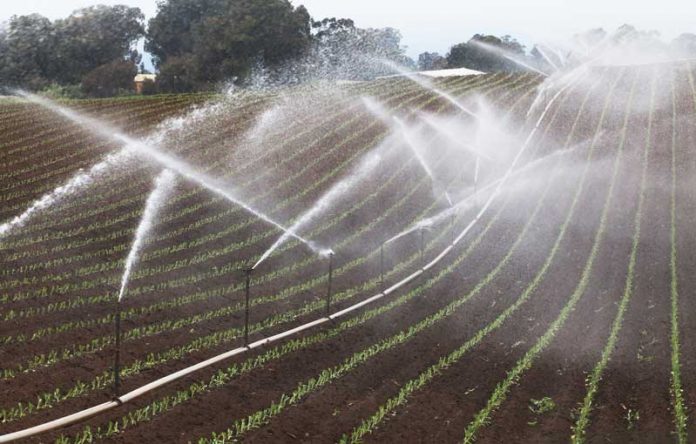
In 1983, a group of local farmers looking for ways to manage the Pajaro Valley’s groundwater basin formed the Pajaro Valley Water Management Agency (PVWMA). A year later, the agency was officially recognized by the state legislature, who tasked them to stop groundwater overdraft and seawater intrusion in the valley—all while preserving the vital agricultural industry.
Now, as the state of California struggles with a severe, ongoing drought, PVWMA’s work has seeped into the community’s consciousness. Marcus Mendiola, the agency’s water conservation and outreach specialist, says that more and more people—government officials, the media, individual residents—have been reaching out to them, asking what can be done to save water.
“Everyone is thinking very short term—they’re thinking, ‘It’s dry right now.’ And that’s a common human experience,” Mendiola said. “But this is a long-term problem. We have been focused on this since 1983. Our mission during these extreme drought periods is only further reinforced.”
Groundwater overdraft occurs when more water is pulled out of the ground that returns to it. And when that happens, a region like the Central Coast is in danger of saltwater intrusion—when seawater, which is heavier than freshwater, fills in those areas.
This means less fresh water to drink—and to grow crops.
As of June 10, the U.S. Drought Monitor reported that all of California is currently in a drought, ranging from “moderate” to “exceptional.” A warm spring season dried up most of the Sierra Nevada snowpack, and dry land underneath the snow prevented runoff into rivers and lakes.
All of this prompted California Gov. Gavin Newsom to declare a drought emergency for 41 of the state’s 58 counties.
“This drought is definitely severe,” Mendiola said. “But this isn’t just a two-year situation. It’s more of a 20-year one. We’ve had a handful of really wet years surrounded by mostly dry years. One single dry or wet season will not take us out from the longer trend of a lot less precipitation. And that is troubling.”
The main solution, according to Mendiola? Water conservation and recycling, the kind of work PVWMA is currently doing. Since the early 2000s, the agency has focused on local solutions, partnering with the city of Watsonville in delivering recycled water to the coast, taking pressure off the aquifer.
For over a decade they have also delivered the recycled water to local farmers.
“The more water we recycle, the better,” Mendiola said. “There are nutrients in the treated water… farmers are aware of that; it helps them use less fertilizer.”
This month the California Department of Water Resources (DWR) released its first assessments of plans developed by agencies to meet the requirements of the Sustainable Groundwater Management Act, which was passed in 2014, one of the driest years in the state’s history.
The Santa Cruz Mid-County Basin was approved, along with a sub basin in Monterey County. Mendiola attributes this to dedicated residents, and especially farmers who have been doing their part in conserving and recycling water.
“Farmers in the Pajaro Valley are using less water,” Mendiola said. “We’re starting to see positive change because people are adapting. They’re changing the crops they grow. They’re changing how they grow, using more hydroponic systems and other technology to measure temperature, wind, humidity, and barometric pressure.”
PVWMA’s numerous projects have contributed to strengthening the region’s recharge basins. This includes the Harkins Slough Pump Station, which in wet years would pump certain levels of water from the slough into the basins. In addition, the agency’s upcoming College Lake Project aims to bring additional diversified water to the region.
And a conservation program, funded at $300,000 per year through 2023, has allocated $100,000 for rebates to agriculture water uses in the Pajaro Valley.
“Drought or no drought, we are still recycling,” Mendiola said. “We’re more prepared than we’ve ever been as a valley for a drought.”










